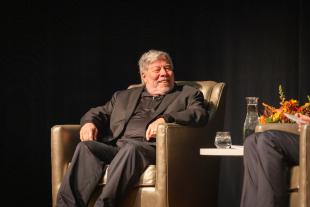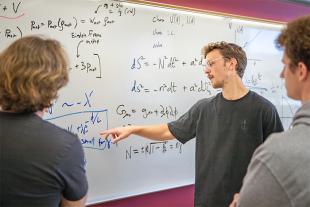'What Am I Going To Do To Stay Active?' Kinesiology Instructor Encourages Fitness At Home

During a typical quarter, Kinesiology and Public Health Department instructor Andrew Silva coaches students through classes in swimming, weight training, volleyball, even fitness walking.
But when the coronavirus pandemic forced campus to adjust to a virtual spring quarter, Silva redesigned his classes with the goal of keeping students active during a challenging time.
“You take for granted the activity that you get in the course of a regular day on campus,” Silva said. “The feedback I’m getting from students is that they’re engaged and they want to be physically active because their routine is gone.”
One of the first things Silva did was send out a questionnaire asking students what their comfort level was with the activity, their skill level and what their goals were. From there, he began holding office hours four days a week, encouraging students to come and check in with him, and to reach out anytime.
“That feedback has been incredibly valuable in helping to customize and guide the class on a week-to-week basis,” he said, adding that he’s been impressed with how his students have responded to the lessons. “They’re holding themselves accountable and taking ownership in their fitness.”
Silva’s classes are asynchronous, which means there’s no set meeting time and students complete the activities at their own pace. He’s conscientious that most students don’t have access to the equipment he usually requires in class, so he’s designed his classes to be sensitive to that fact.
For instance, since most of the students in his swimming classes don’t have a pool available to them, Silva provides swimming-related activities that students can perform in a living room, or a backyard. He’s designed his weight training classes around exercises his students can do either with their own bodyweight, or with items they have in their home, like water bottles.
“Our students are all in diverse housing situations,” Silva said. “I want to make sure that the options for physical activity and the information I present offers a wide range of possibilities that students can use in their current living situation.”
The class has also had an unexpected benefit in that students are finding ways to get their family members active along with them. Silva noted that several students had told him they went through the activities with a parent or a sibling.
“I think it’s very positive and exciting that students are engaging in lessons from the class with the people that they’re living with,” Silva said. “It’s neat to see the message of physical fitness and wellbeing shared with other people just because of living situations.”
Fourth-year business major Lindsey Doerr, one of Silva’s students, said her fitness walking class has become a great way to bond with her mom.
“I was originally supposed to take golf and bowling, and the bowling class got canceled,” Doerr said. “Cal Poly sent out an email with a bunch of activity classes, and I thought fitness walking would be a good idea. I don’t like running, and if I can’t go to the gym, what am I going to do to stay active?”
Doerr said she thinks the mandated activity has helped her through this uncertain time.
“Otherwise, I wouldn’t have the motivation to get up and do it,” Doerr said. “It’s helped me, being outside, and I can see how it changes my day.”
Doerr and her mom walk together twice a week, using that time to talk and get away from technology. The time together has helped them discover new walking trails around Folsom, where they live.
“I’ve always been close to my mom, but I’ve been away at college,” Doerr said. “Now I get to be with her during college and catch up. I probably wouldn’t have this opportunity otherwise.”
Silva said he hopes the classes set his students up for success in their personal journeys with physical activity as it relates to their overall health.
“The motivation I’m seeing from students is impressive,” Silva said. “It’s a challenging situation, but it’s an opportunity to be creative and innovative in what we’re doing and still reach our students, still engage our students.”




